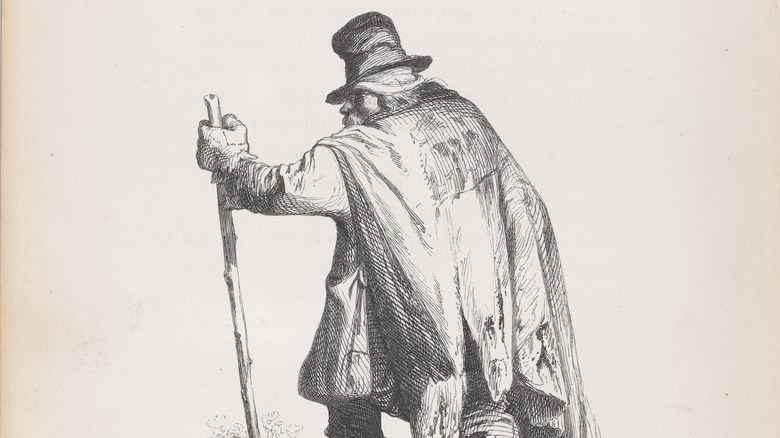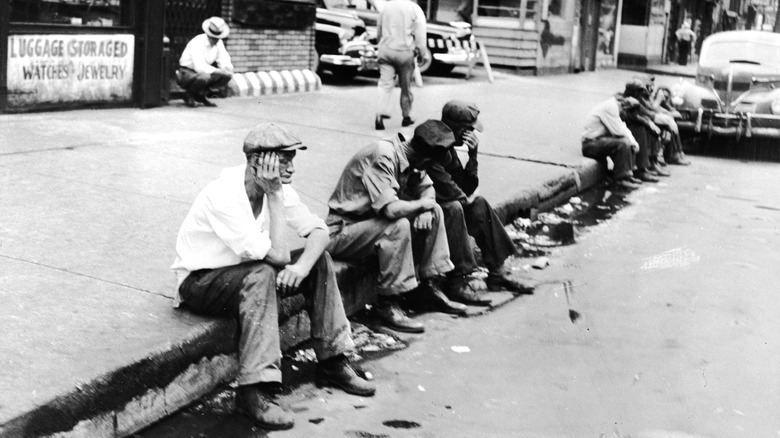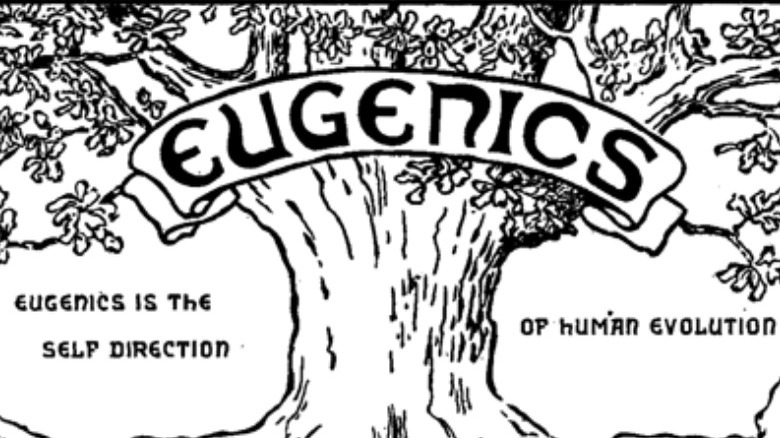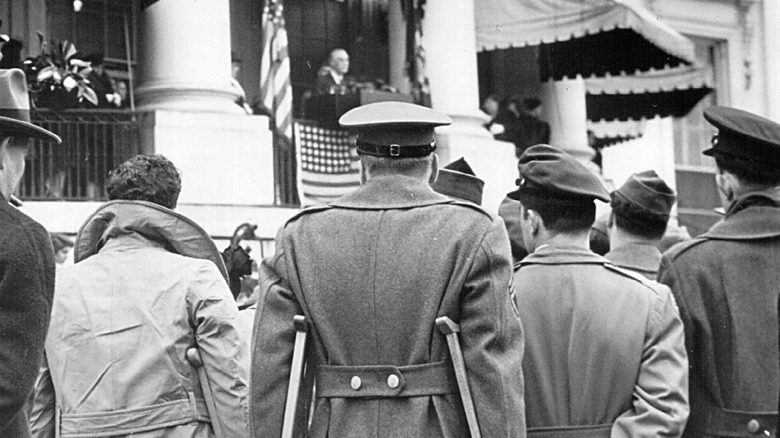The Untold History Of Ugly Laws
When the last arrest for violating an "ugly law" occurred in the United States in the 1970s, a judge questioned, "What's the standard of ugliness? Does the law mean that every time my neighbor's funny-looking kids ask for something, I should have them arrested?" (per History Daily). While on the surface the case can seem laughable, the history of ugly laws is significantly more sinister than either the judge or the arresting officer may have realized.
Based in ableism, classism, and eugenics, ugly laws were used to maintain a very specific outward image of society. And because the idea of a "disgusting object" is vague and can be applied subjectively, it was easy to apply the law towards anyone who was deemed by another to be unworthy.
In 1916, a woman named Mother Hastings was paid by the city of Portland to leave town because she was "too terrible a sight for the children to see," reports SFGATE. However, not everyone was so lucky as to be paid for their exile, and many ended up imprisoned in asylums or almshouses. This is the untold history of ugly laws.
What is an ugly law?
Ugly laws refer to legislation that existed across the United States during the 19th and 20th centuries. Although the term "ugly laws" wasn't coined until 1975, according to the Eugenics Archive, laws that targeted peoples' appearance were on the books as early as the 1860s. The very first ugly law was created on July 9, 1867, in San Francisco. In addition to outlawing "street begging," Order No. 873 also mandated that "any person who is diseased, maimed, mutilated, or in any way deformed so as to be an unsightly or disgusting object, or an improper person [...] shall not therein or thereon expose himself or herself to public view," per "The Ugly Laws" by Susan M. Schweik.
Numerous cities passed similar laws in the United States, including New Orleans in 1879, Chicago in 1881, and Reno in 1905. Even Manila, which was under U.S. jurisdiction, passed its own ugly law in 1902. Many of the laws used phrasing similar to the first San Francisco law, and often referred to people as a "disgusting object." SFGATE writes that in San Francisco, those who were arrested for violating an ugly law had to pay a fine of $25, roughly $460 today, and faced 25 days in jail.
Schweik also writes that ugly laws weren't just an abstract distinction. "Definitions of and penalties for unsightliness could take different forms for women than men, Italians than African Americans, and so on," she wrote.
Eugenics all the way down
Ugly laws were mainly used against people who were financially insecure, houseless, and/or disabled. Eugenics Archive writes that such laws became a classist distinction and effectively kept people with visible disabilities, especially those who were soliciting for food or money, from appearing in "public urban spaces" and "provide[d] a legal basis for removing them from such spaces."
These laws were intimately tied to the eugenics movement. According to The BMJ, poverty and criminality were attributed to "bad genes," and were considered grounds for sterilization. And because these sterilization laws primarily affected those in state institutions, they disproportionately affected minority groups, such as Black people and immigrants. As sterilization laws focused on what eugenicists believed were the "less visible disabilities that threatened future social order," ugly laws were used to simultaneously control society's outward appearance.
Many of these laws also worked in conjunction with "drunk and disorderly" statutes. In 1915, a man in Indianapolis was arrested after having an epileptic seizure as he got off a streetcar because the policeman thought he was drunk. After a local doctor came forward to "certify his epilepsy," having read about the man in the paper, the man was released on the condition that he be "institutionalized for life in Indiana's Village for Epileptics," Schweik writes in "The Ugly Laws."
What happened to ugly laws?
The wane of ugly laws began after World War I. With so many people returning from the war physically or mentally disabled, it became difficult to discriminate against people as overtly as before. According to the Chicago Tribune, after World War I ended in 1918, no more ugly laws were passed. SFGATE also writes that they primarily stopped being enforced because "laws discriminating against war veterans became politically unpalatable." However, that didn't mean that they didn't continue being used, albeit more and more infrequently.
The last known use of an ugly law for an arrest occurred in 1974 when a police officer arrested a houseless person in Omaha, Nebraska. With no reason to make an arrest, the officer cited the ugly law and the "marks and scars on his body." But in the end, the prosecutor didn't press charges.
History Daily writes that it took until 1990, when Congress passed the Americans with Disabilities Act, for federal civil rights protections to be extended to those with mental or physical disabilities and effectively put an end to any and all ugly laws that targeted people based on a physical disability. Unfortunately, as TIME Magazine notes, this has done little to prevent police violence against disabled people, violence which in turn disproportionately affects Black people. Like when the Oklahoma Highway Patrol assaulted Pearl Pearson in 2014 because being deaf and mute, he couldn't follow their verbal commands. Pearson later received a $175,000 settlement, per News on 6.



